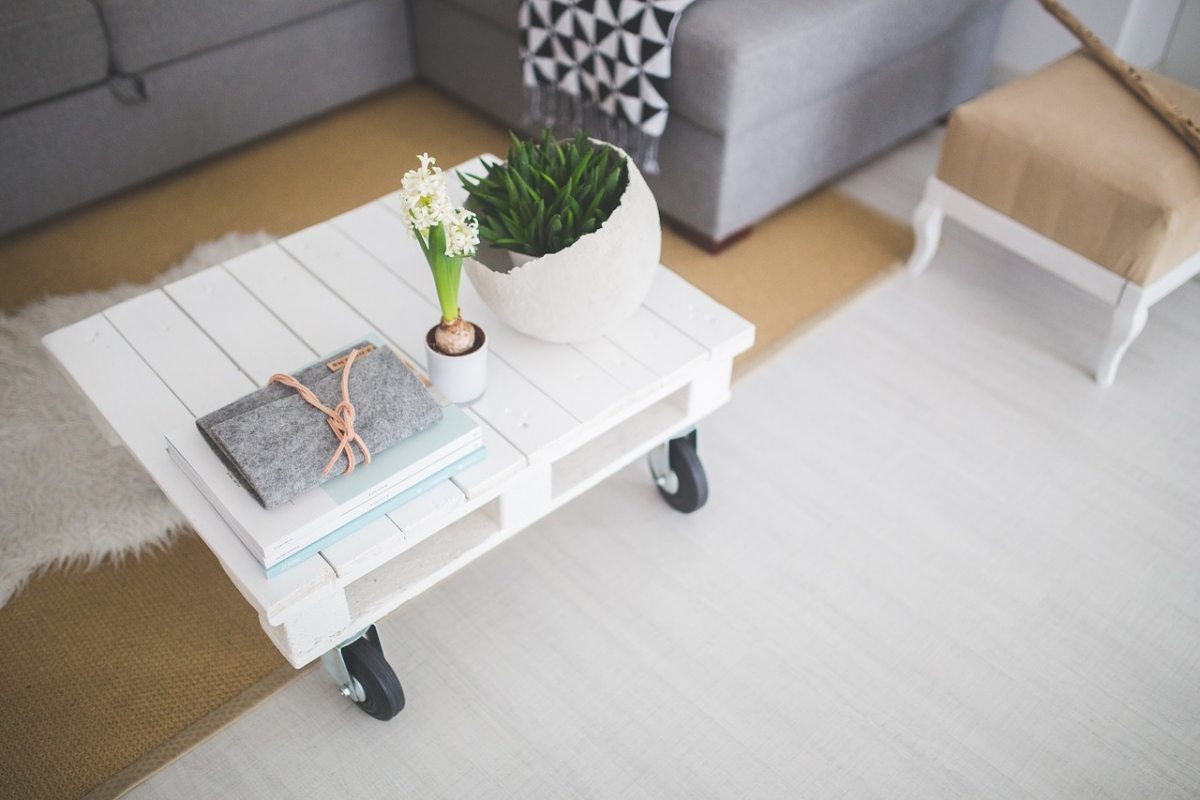10 Tips For Decorating in Small Spaces

Are you stuck for space at your place? Despite that being a lovely rhyme, it is not so lovely when you are trying to work around a cramped room or home. Small can be cosy, lovely and very practical. Huge spaces, while often on our dream home list, can be hard to decorate and can feel cold if not styled well.
Yet small spaces can also fill up quickly and become cramped and cluttered. The most important thing is not the size of your home, but how you feel in it, and the function of the spaces for your lifestyle.
A few of our readers responded recently to my question about what you need help with, by saying they wanted tips for decorating small homes. So I have put together 10 Tips For Decorating in Small Spaces for you today. I would love to hear yours!
1) Choose the shape of your furniture well
The shape of your furniture is important because you want to reduce the footprint and the extension of furniture into the space you need to live in. For example select chairs and sofas with no arms, or low arms, as they work best in small spaces. Round tables work well in small dining rooms. Don’t select furniture which juts out into the walkways, stay more slimline.
2) Blend your furniture into the flooring
Use a similar choice of colours for flooring and furniture, rather than creating a more separated look with contrasting colours. Make sure the sofa connects with the flooring to draw the eye from the floor, upwards. Vertical stripes can also work well, on walls, textiles and furniture.
3) Create a visual clutter free space
Regularly tidy and de-clutter,especially if you are like me and are a hunter and gatherer 🙂 Have baskets and toy boxes you can throw all the kids toys into at the end of each day. Keep open shelving to a minimum. I love an open shelf and have a few, but in a small space too many open shelves with things tumbling off them just create a sense of being overwhelmed and cramped. Keep these to a minimum and have only a select number of items on display.
4) Colour linkage and pops of colour
Linking colours in a space across different pieces of furniture make things seem larger.For example if you have a yellow coffee table, or a yellow vase on the table, use a yellow cushion behind it on the sofa. This extends the eye and creates a sense of space and depth,because we notice the similar colour pops first. Bring the focus away from the wall, so you notice the constraints of the room less, by using your pops of colour at the forefront of furniture.
5) Keep furniture off the walls
You would think that in a small space you want everthing aginst the walls to keep as much free space as possible. But this just draws your eyes to the dimensions of the room. Try to create the idea there is more space and draw the eye away from the walls by keeping your furniture slightly off the walls, and place some of the seating at angles.
6) Monochromatic palettes
Colour palettes which stay within a particular hue work well – but not all the exact same colour, which can be boring- rather use similar tones, with texture and shape for visual interest. For example you may choose a range of greys, whites and blacks as your colour palette, with 3 or 4 different types of grey and add some textured cushions with fringes, pom poms or macrame, to add more visual interest.
7) Make use of verticals
Using the vertical space of your walls is the quickest way to make a room bigger. Build shelving that is multi purpose, have floor to ceiling book shelves which create a sense of grandness. Look at each room and where you might add vertical storage. Having your television mounted to the wall in a small space just makes sense. Get creative and use vintage ladders, old crates and pallet shelves to add interest and an upcycled touch.
8) Make use of smart storage
In a small space the more things one piece of furniture can do the better. Look for things like ottomans with storage inside, coffee tables with shelves underneath, and clever under bed storage.
9) Use paint colour well
White and lighter colour paint works really well in most spaces, but some dark colours can work very well because visually dark colors recede, while light colors advance. What this means for a small space is that you don’t need to stick to white. Dark accent colors like deep blue, charcol, or even black, can make a space look larger when you use them on a wall. This will visually push the wall backward, giving the room a greater sense of depth and space. Experiment with darker colors you like and remember that dark colored walls seem to work best when they have a large amount of natural light in the room which reflects off the walls of the room. It also works best when you stick to very light or white furnishings in the room.
10) Curtains Smoke & Mirrors
Create a sense of height with floor to ceiling curtains, try sheers or vertical stripes. Simply fit the curtain rod or track higher than the actual window. This tricks the eye into thinking there is far more space than there really is. Use mirrors well to reflect the outside views or a piece of artwork, and bounce more light into the room.
There are 10 tips for decorating small spaces. Do you have a small space and do you have any to add?
Helen
xx



LOL! U0001f604 very cool small spaces! Great photo.
arent they cool!
[…] inspired by her decorating tips while you’re there – got a small space? Helen has some […]
looks like a jail cell
fair enough! We all like different things 🙂